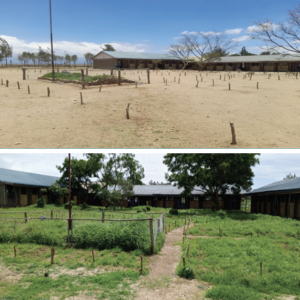When the well runs dry: Rethinking development in the wake of donor withdrawal
26 Aug 2025
A turning point for African NGOs
In recent years, Africa has witnessed a quiet but significant shift in the development landscape. The gradual withdrawal of traditional donors due to shifting geopolitical priorities, domestic pressures in donor countries, or the growing critique of aid dependency, has led to many African civil society organizations confronting a stark reality: donor support is no longer guaranteed.
Like many community-based organizations across Africa, the end of this support invites a critical question: what happens when external aid ends? The answer is not always optimistic. For many grassroots initiatives, the withdrawal of donor support means delayed projects, unfulfilled dreams and vulnerable communities left hanging. It raises serious concerns about sustainability, ownership and long-term community development. But it also presents an opportunity, an invitation for African countries and organizations to rethink their approach to development financing.
The implications of donor withdrawal
Donor funding has played a pivotal role in the growth of civil society across Africa. It has funded everything from health and education to climate justice and human rights. However, this support often comes with strings attached, project timelines, reporting expectations, and shifting donor priorities that may not always align with local needs.
When donors exit, due to economic recessions, shifting geopolitical interests, or evolving strategic focus, organizations are left scrambling. The result? Discontinued services, disrupted community trust and interrupted momentum in tackling systemic challenges such as poverty, inequality and injustice. Therefore, the current transition invites us to reimagine development: not as a gift from the outside, but as a process rooted in local knowledge, leadership and resources.
Why local resource mobilization matters
In the face of this shift, local resource mobilization (LRM) and community philanthropy emerge not just as a financial strategy, but as a philosophy of ownership. At its core, local resource mobilization is about communities recognizing their power and resources, whether financial, social or human, and using them to shape their futures.
“Local resource mobilization and community philanthropy emerge not just as a financial strategy, but as a philosophy of ownership.”
We have seen this in action at our organization, Resources Oriented Development Initiatives (RODI). In Solio, Laikipia County, Kenya, the community mobilized local resources and repaired a water tank stand – supporting a local water distribution system, and giving over 300 households better access to clean water for domestic and farming use. In Kiambu Kiambu, Kenya, the Joy Town Special Primary School jointly launched a campaign that mobilized essential supplies, diapers and sanitary towels, ensuring dignity and improved school attendance for children with special needs. At Nzaambani – Machakos County, the community mobilized resources in road repair and maintenance providing access to ease transport and movement of persons. These are stories of resilience, as well as blueprints for a new kind of development even in a system that is blind to in-kind contributions and does not like to count them. Conveniently forgetting that in-kind contributions cost money too from the local community donor. So, they are just as good as donated cash. But the looming question remains: How do we ensure this work continues after the exit of external support, and to build systems that outlast grants and withstand shocks?
“Local resource mobilization is not just a response to donor exit, it has always been a pathway to sovereignty, sustainability and dignity.”
From our journey with growing local resources and community philanthropy, we have learned that communities are not passive recipients. They are active agents and co-funders with the power to define and drive their own development priorities. The traditional top-down aid model is crumbling. In its place, a new model is emerging, one that values community knowledge, centers local leadership and builds collective power. Like the Chief in Soilo said, “We realized we don’t have to wait for outsiders. We have land, youth and ideas, we just needed to believe in ourselves.” As we navigate the post-donor era, the question is no longer how much aid we can attract, but how much power we can build with local money and other local resources both in-kind and in intangible resources. Local resource mobilization is not just a response to donor exit, it has always been a pathway to sovereignty, sustainability and dignity.
At RODI, we are committed to walking this path. But we also know that we cannot do it alone. We need networks, partnerships, and a shared commitment to flipping the script on how development is imagined and who see local philanthropy as a viable path. Because when the international aid well runs dry, it is our local resources that will keep us going.
By: The team at Resources Oriented Development Initiatives (RODI).


